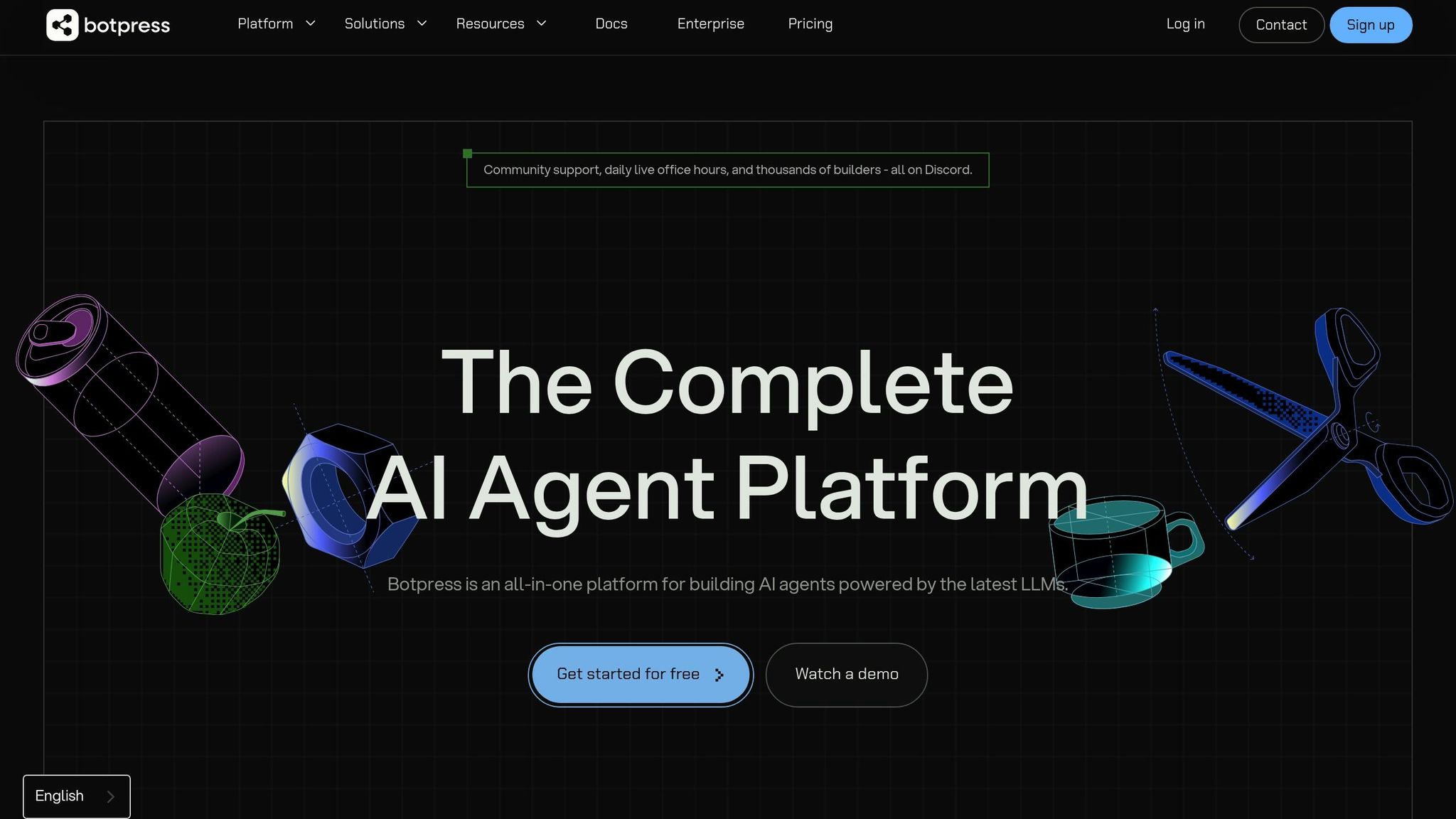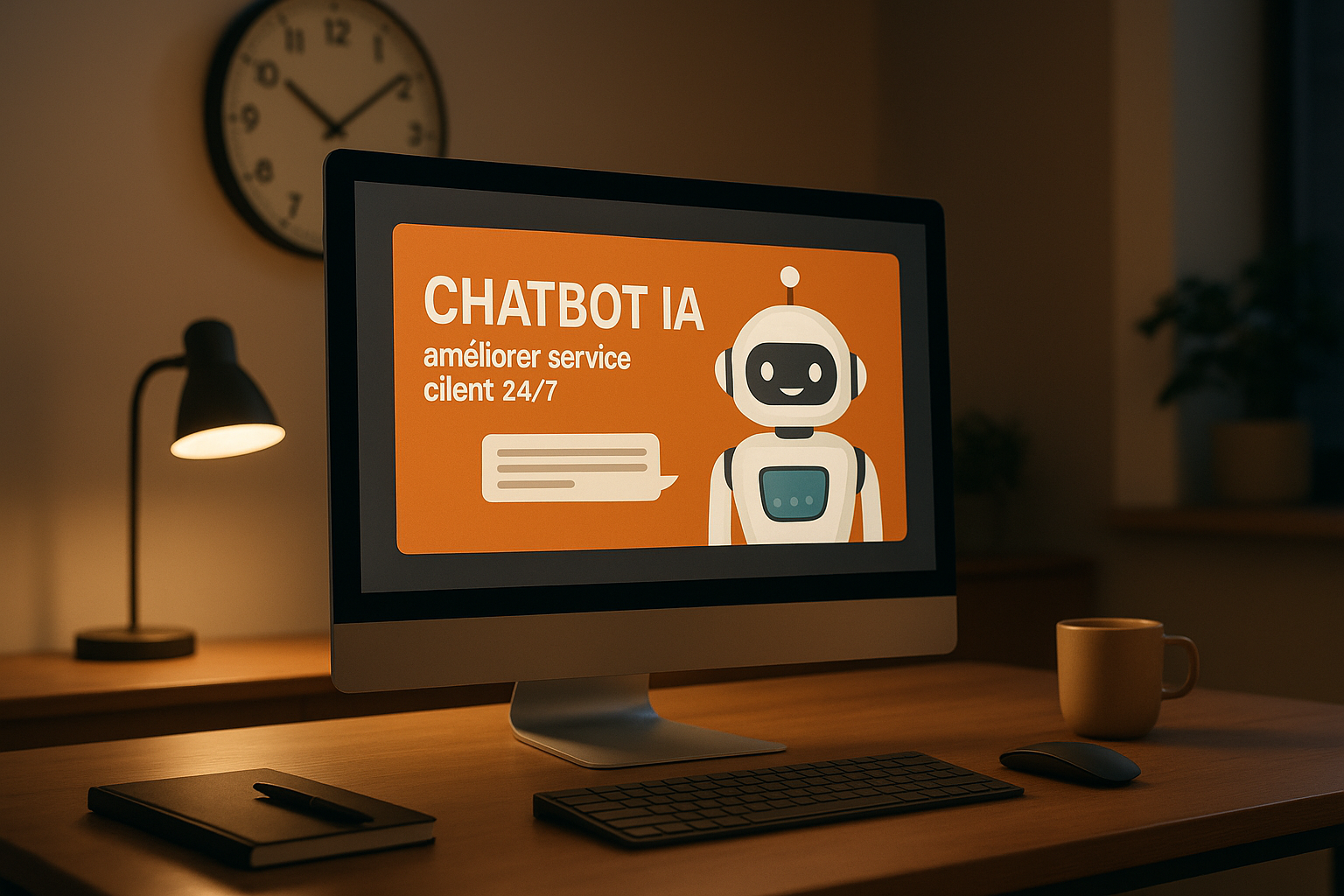Chatbot AI: improve customer service 24/7
Chatbot AI: improve customer service 24/7
Available 24/7, they respond instantly, in multiple languages, and adapt to the specific needs of Swiss consumers. In a multilingual country like Switzerland, where French, German, Italian, and English coexist, these tools ensure smooth and relevant interactions, while reducing costs and increasing customer satisfaction.
Key points to remember:
- Permanent availability: Instant responses, even outside office hours.
- Multilingualism: Automatic language management (French, German, Italian, English).
- Proven efficiency: Up to 71% of automated requests at Teleboy.
- Operational cost reduction with significant scalability.
- Personalization: Interactions tailored to the context and preferences of users.
Swiss companies like Teleboy, Swiss Casinos, and Unilabs have already successfully integrated these solutions, thus improving their customer service while respecting local requirements, such as data protection and linguistic specificities.
Do you want to modernize your customer service?
Create a PRO AI chatbot for your customer service with Botpress

Key benefits of AI chatbots
AI chatbots revolutionize the customer experience by addressing daily business challenges. In Switzerland, they go beyond mere automation: they become essential tools to improve productivity and deliver quality service.
24/7 availability and response speed
One of the major advantages of AI chatbots is their continuous availability. This ability to be operational at all times aligns perfectly with the expectations of Swiss consumers. 64% of customers consider 24/7 availability as one of the most useful features of chatbots [3].
Moreover, , and nearly two-thirds abandon if the wait exceeds 2 minutes [2]. AI chatbots enable instant responses, thereby reducing wait times and enhancing the overall experience.
A striking example is that of , which automated between 40% and 50% of requests via chat. Result: agent efficiency increased by 30% and customer satisfaction (CSAT) rose from ~90% to 98%. These improvements maintained short response times, even during peak demand periods [4].
Chatbot performance varies by type:
| Chatbot type | Average response time [2] |
|---|---|
| Rule-based | Less than one second |
| Retrieval-based | 1–4 seconds |
| Generative | Seconds to minutes |
The results are clear: faster responses can increase customer satisfaction by up to 20% [2]. For example, Conectys, active in Switzerland, reduced ticket resolution time by 52% through AI [4]. These advancements offer a smoother and more efficient customer experience.
Personalized interactions with customers
In addition to their speed, AI chatbots stand out for their ability to personalize interactions. Through Natural Language Processing (NLP), they understand user intentions and tailor responses based on context, history, and individual preferences.
This personalization is particularly valuable in a multilingual country like Switzerland. For example, Interprefy's Aivia tool offers support in 24 languages, meeting the needs of contact centers and events [4].
H&M also exemplifies this approach with a chatbot acting as a 24/7 shopping assistant. Not only does it reduce the burden on human agents, but it also improves response times and nearly eliminates wait times, even during peak periods [1].
Modern chatbots analyze user behaviors to anticipate their needs and provide relevant recommendations. They transform each interaction into an experience tailored to the diverse expectations of Swiss consumers.
Cost reduction and scalability
AI chatbots . 80% of companies see an improvement in their customer service performance after integrating AI [1].
Another key advantage is their ability to handle an unlimited number of conversations simultaneously, unlike human agents. This capability is particularly valuable during peak activity periods, such as product launches or high-demand seasons.
American Express exemplifies this advantage: thanks to the integration of AI chatbots, the company reduced response time by 90% for requests and increased customer satisfaction by 22% [5].
Projections for the sector are promising: 80% of companies are expected to use AI chatbots for customer service by 2025 [5]. These tools can also improve productivity by 30% to 50% or more [5].
Furthermore, chatbots not only handle growing volumes but also adapt to new channels, languages, and services. In a country like Switzerland, where linguistic requirements vary from one canton to another, this flexibility is a major competitive advantage, enabling companies to effectively cater to a diverse clientele.
Thus, AI chatbots combine savings, efficiency, and personalization, offering Swiss companies a solution perfectly tailored to their multilingual needs and growth ambitions.
How to deploy a multilingual chatbot for Swiss companies
With the rise of AI chatbots, Swiss companies must juggle technical requirements, regulatory constraints, and linguistic expectations to offer solutions tailored to a multilingual clientele. Here's how to approach this process in a structured manner.
Assessment of business needs and objectives
Start by defining your goals. Does your chatbot need to handle customer support, generate leads, answer frequently asked questions, or assist in the sales process? A clear understanding of these priorities will help you identify the necessary features and plan resources accordingly.
Also, consider your linguistic audience. Analyze the volume of requests: an SME with a few hundred monthly queries will have different needs than a multinational handling thousands of interactions per day. This type of analysis helps calibrate the solution to the actual size and needs of your business.
Selection of the appropriate chatbot platform
Choose a high-performance platform suitable for bilingualism. For example, models like CroissantLLM, designed with a 1:1 training ratio in English and French, offer better accuracy, especially for French texts, with performance improvements of up to 40% [6].
Ensure that the platform integrates seamlessly with your existing tools, such as your CRM or ticketing system. This ensures a smooth experience and avoids information silos. Also, customize the tone, vocabulary, and "personality" of the chatbot to reflect your brand and maintain consistency across all customer touchpoints. Once the platform is chosen, focus on local adaptation and regulatory compliance.
Localization and compliance with Swiss standards
Localization goes beyond translating content. It involves adapting the chatbot to local expectations: using the Swiss franc (CHF) for monetary references, adopting the European date format (dd.mm.yyyy), and considering linguistic specificities, such as Swiss German.
From a regulatory standpoint, the Federal Act on Data Protection imposes strict rules. If your chatbot makes automated decisions or processes sensitive data, you will need to conduct a Data Protection Impact Assessment (DPIA) [7][8]. This includes interactions with vulnerable groups as well.
Ensure that users can clearly identify AI-managed interactions and always have the option to contact a human agent [8][9]. Integrate human supervision mechanisms ("human-in-the-loop") to validate automated decisions.
| Regulatory requirement | Required action | Potential sanction |
|---|---|---|
| DPIA for high-risk AI | Mandatory impact analysis | Up to CHF 250,000 [7][8] |
| Transparency of AI interactions | Clearly identify + offer human contact | Administrative sanctions |
| Transborder data transfers | Use standard contractual clauses | Up to CHF 250,000 |
Data transfers to the United States must comply with the Swiss-U.S. Data Privacy Framework, in effect since September 2024 [7][8]. Transparently inform users about the chatbot's limitations and guide them to other channels if necessary [9].
"Your data remains your data. We ensure it stays secure - on Swiss soil, with Swiss standards." – Nucamp [7]
Lastly, adapt prompts to include local language segments like Swiss German. In some cases, consider human translation to ensure accuracy.
The compliance cost for complex AI systems can range from CHF 218,000 to CHF 3.7 million per year. Careful planning from the early stages is essential to manage these costs effectively [8].
sbb-itb-454261f
Improving chatbot performance for bilingual Swiss audiences
Once your chatbot is deployed, don't stop there. To meet the expectations of Swiss users, it's essential to continue adjusting and improving it. Without these efforts, you risk not only decreasing customer satisfaction but also increasing your support costs.
Linguistic and local adaptation
Adapting a chatbot goes beyond translating its content. In Switzerland
